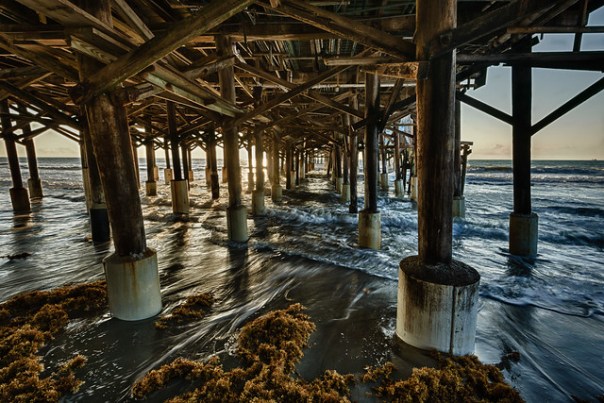A couple of people asked me interesting questions recently. I don’t have final answers but I do have opinions. And sometimes opinions are more interesting than answers. Or at least more fun.
1. How do you get your skies to look like that?

Sky, clouds, star, calm, reflections – Orlando Wetlands Park at dawn.
Short answer: “It depends.”
Longer answer: There is no concise response to this. First of all, it depends on the sky. You have to have something to start with. Second it depends on your tastes as an artist.
I own and use a variety of software.
- Lightroom 4
- Photoshop CS 6 (including merge to HDR)
- Nik HDR Efex 2
- Nik Color Efex Pro 4
- Topaz plug-ins (De-Noise, Adjust, B&W Effects)
What I use depends on the subject, composition and capture technique. Since the sun was in this scene, I captured it as a 7 shot bracket. In Lightroom, I set the camera profile to neutral, color balance to daylight, enabled lens corrections, and copied those settings to all 7 photos. Then I exported to Nik HDR Efex 2, chose a pre-set, and tweaked it to more or less match how I remembered the scene. I brought the result into Photoshop CS6 and used Nik Color Efex Pro 4 to neutralize the whites and add detail, followed by Topaz Star Effects on the sun. I usually apply these in layers or as smart objects in Photoshop so I can vary the transparency and control the strength of each one, or even brush it out on parts of the image. I then finished in Lightroom with some exposure, sharpening, and Hue / Saturation / Luminosity tweaks to get this result.
So basically I try things and adjust to taste. There’s more than one way to do this. That’s part of the fun. You’ll have to build up some experience with the capabilities of each piece of your software so you can adjust to your tastes.
2. With the new capabilities available in cameras and raw conversion software, do we still need to use High Dynamic Range imaging techniques?

Sunrise flowers – Orlando Wetlands Park at dawn.
Short answer: “Not as much.”
Longer answer: Read on.
DxOMark says that the Nikon D800 has a dynamic range of 14.4 Evs. This is under laboratory conditions using their measurement techniques. Can you achieve this in real world? No, but using a camera like this really does give you tremendous dynamic range.
The latest versions of Lightroom 4 and Adobe Camera Raw software provide enormous adjustment ranges for exposure, highlight and shadow recovery, even for older cameras. This improves your ability to get more out of your RAW images. By the way, you might want to re-process some of your favorites to see how much better they can look. You have been capturing in RAW format and saving your originals, haven’t you?
Other techniques such as graduated neutral density filters or fill flash can cut the dynamic range the camera sees – although depending on the scene, their use can be problematic. In this photo the horizon isn’t flat, and I didn’t want to overwhelm the morning light on the flower with flash.
My opinion: In some situations, we don’t need to use HDR anymore. I may have been able to get this output with one exposure, but it’s probably on the edge of what’s possible with just a single image. I chose to shoot a 5 image bracket and I’m glad I did. The bright sky combined with the lighting on the flower (with part in shade) made me very glad I had the bracket. Could I have come close with a single image? Maybe. Was it easier with a 5 shot bracket? Oh yeah.
For now, I’ll continue to bracket when I see a broad dynamic range / high contrast scene. Better safe than sorry. And I’m also going to save my RAW files – who knows what software advances are coming next? Now, where can I get a bigger hard disk?
What do you think? How do you get your sky to look the way it does? Do you shoot HDR?
You can click on the images above to get to larger versions on Flickr. You can also see more of my OWP photos here on Flickr.
Thanks for stopping by and reading my blog. Now – go make some photos!
©2012, Ed Rosack. All rights reserved


























